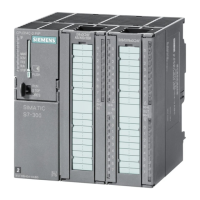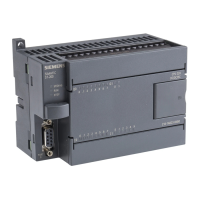Libraries
9.2 USS library instructions
S7-200 SMART
414 System Manual, 09/2015, A5E03822230-AC
Requirements for using the USS protocol
The STEP 7-Micro/WIN SMART instruction libraries provide subroutines, interrupt routines,
and instructions to support the USS protocol. The USS instructions use the following
resources in the S7-200 SMART CPU:
● The USS protocol is an interrupt driven application. In the worst case, the receive
message interrupt routine requires up to 2.5 ms to execute. During this time, all other
interrupt events are queued for service after the receive message interrupt routine has
been executed. If your application cannot tolerate this worst case delay, then you may
want to consider other solutions for controlling drives.
● Initializing the USS protocol dedicates an S7-200 SMART CPU port for USS
communications.
You use the USS_INIT instruction to select either USS or PPI for port 0 or port 1. (USS
refers to the USS protocol for Siemens drives.) When a port is set to use the USS
protocol for communicating with drives, you cannot use the port for any other purpose,
including communicating with an HMI. The second communications port allows
STEP 7-Micro/WIN SMART to monitor the control program while USS protocol is running.
● The USS instructions affect all of the SM locations that are associated with Freeport
communication on the assigned port.
● The USS subroutines and interrupt routines are stored in your program. The USS
instructions increase the amount of memory required for your program by up to 3050
bytes. Depending on the specific USS instructions used, the support routines for these
instructions can increase the overhead for the control program by at least 2150 bytes and
up to 3050 bytes.
● The variables for the USS instructions require a 400-byte block of V memory. The starting
address for this block is assigned by the user and is reserved for USS variables.
● Some of the USS instructions also require a 16-byte communications buffer. As a
parameter for the instruction, you provide a starting address in V memory for this buffer. It
is recommended that a unique buffer be assigned for each instance of USS instructions.
● When performing calculations, the USS instructions use accumulators AC0 to AC3. You
can also use the accumulators in your program; however, the values in the accumulators
will be changed by the USS instructions.
● The USS instructions cannot be used in an interrupt routine.
